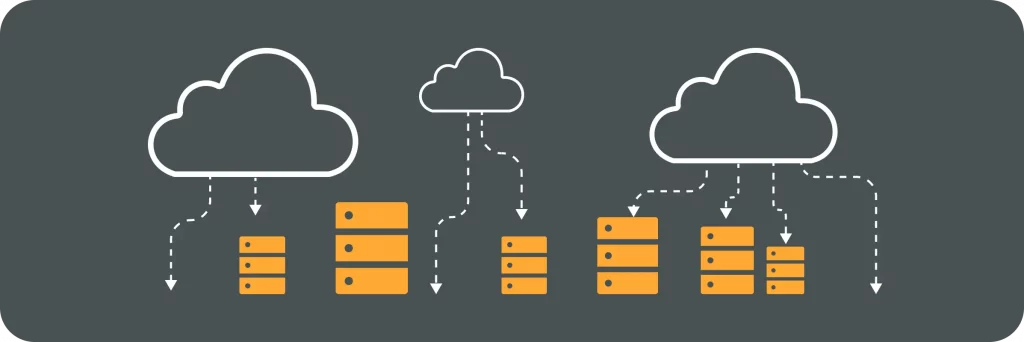Trunk-Based Development (TBD) is a software development approach that focuses on maintaining a single, continuously integrated codebase. It promotes collaboration and accelerates software delivery in the DevOps environment. Understanding the concept of TBD and its key principles is crucial for organizations looking to improve code quality and reduce integration issues.
Understanding Trunk-Based Development
Trunk-Based Development is based on the idea of maintaining a mainline or trunk, which serves as the single source of truth for the entire development team. Unlike traditional branching models, TBD discourages long-lived feature branches and encourages developers to commit their changes directly to the trunk. This approach facilitates continuous integration and enables teams to work collaboratively on a single codebase.
The Concept of Trunk-Based Development
In trunk-based development, the trunk represents the production-ready codebase. All developers continuously integrate their changes into the trunk, minimizing the risk of code divergence and conflicts. This approach emphasizes the importance of small, frequent commits, ensuring that the codebase is always in a stable state. By relying on automated tests and robust deployment pipelines, teams can quickly detect and rectify any issues, resulting in faster software delivery.
Key Principles of Trunk-Based Development
Trunk-Based Development is guided by several key principles. First and foremost, continuous integration is a fundamental aspect of TBD. Developers must ensure that their changes are integrated into the trunk multiple times a day, allowing for early detection of any problems. Additionally, code review plays a crucial role in maintaining code quality and adherence to coding standards. Regular reviews foster knowledge sharing and enable the identification of potential issues before they are merged into the trunk.
Another important principle of Trunk-Based Development is the concept of feature toggles. Feature toggles allow teams to selectively enable or disable certain features in the codebase. This approach enables teams to release new features gradually, reducing the risk of introducing bugs or destabilizing the system. By using feature toggles, teams can also gather user feedback and make informed decisions about the direction of their development efforts.
Furthermore, Trunk-Based Development encourages a culture of experimentation and learning. By committing changes directly to the trunk, developers have the opportunity to receive feedback from their peers and stakeholders early on. This feedback loop promotes continuous improvement and fosters a sense of ownership and accountability within the team. It also allows for rapid iteration and the ability to pivot quickly in response to changing business needs.
The Role of Trunk-Based Development in DevOps
In the context of DevOps, Trunk-Based Development serves as a vital enabler for collaboration and accelerated software delivery. By breaking down silos between developers and operations teams, TBD enhances collaboration and brings stakeholders together to focus on shared goals.
Enhancing Collaboration in DevOps
With trunk-based development, developers collaborate more closely with operations teams, ensuring that their changes are seamlessly integrated into the production-ready trunk. This close collaboration promotes a culture of shared ownership and fosters cross-functional expertise. It empowers developers to take responsibility for the entire software development lifecycle, resulting in faster feedback loops and better overall quality.
Accelerating Software Delivery
Trunk-based development eliminates the overhead of managing multiple long-lived branches, streamlining the development process. It enables continuous integration and continuous delivery, allowing organizations to release new features and bug fixes quickly and frequently. By minimizing the time taken to merge and test changes, teams can focus on delivering value to end-users more rapidly, giving them a competitive edge in the market.
Furthermore, trunk-based development also facilitates efficient code reviews and knowledge sharing among team members. With a single trunk, developers can easily review each other’s code, provide feedback, and share best practices. This collaborative approach not only improves the quality of the codebase but also helps in the professional growth of individual team members.
In addition, trunk-based development encourages a culture of experimentation and innovation. By enabling developers to quickly integrate their changes into the main codebase, it becomes easier to test new ideas and iterate on them. This iterative approach fosters a culture of continuous improvement, where teams can learn from their experiments and make data-driven decisions to enhance the software’s functionality and user experience.
Benefits of Trunk-Based Development in DevOps
Implementing trunk-based development in a DevOps environment offers several benefits that enhance code quality and streamline software delivery pipelines.
Improved Code Quality
Trunk-based development promotes a culture of code ownership and accountability. By committing smaller, incremental changes, developers can focus on writing high-quality code while adhering to established coding standards. This approach facilitates early identification and resolution of issues, leading to cleaner, more maintainable code.
Reduced Integration Issues
Long-lived feature branches can introduce complexity and integration challenges. In contrast, trunk-based development encourages frequent integration, reducing the risk of conflicts and compatibility issues. By regularly merging changes into the trunk, teams can detect and address integration problems early on, ensuring a smooth and seamless development process.
Furthermore, trunk-based development enables teams to take advantage of continuous integration and continuous delivery (CI/CD) practices. With CI/CD, developers can automate the build, test, and deployment processes, allowing for faster and more frequent releases. This not only accelerates time to market but also ensures that the software is always in a releasable state, ready to be deployed to production.
Another benefit of trunk-based development is improved collaboration and knowledge sharing among team members. Since everyone is working on the same codebase, it becomes easier to share insights, discuss ideas, and provide feedback. This fosters a sense of camaraderie and collective ownership, leading to better collaboration and ultimately, better software.
Implementing Trunk-Based Development in DevOps
Successful implementation of trunk-based development requires the adoption of essential tools and best practices. By leveraging these tools and following best practices, organizations can streamline their development processes and foster a culture of collaboration and continuous improvement.
Essential Tools for Trunk-Based Development
Version control systems, such as Git or Mercurial, are fundamental to trunk-based development. These tools provide the infrastructure to manage and track changes in the codebase, enabling collaborative development and effective branching strategies. With version control systems, developers can easily create branches, merge changes, and revert to previous versions, ensuring a smooth and efficient development workflow.
In addition to version control systems, automated testing frameworks play a crucial role in trunk-based development. These frameworks allow developers to automatically run tests on their code, ensuring that any changes made do not introduce regressions or break existing functionality. By incorporating automated testing into the development process, organizations can catch and fix issues early, reducing the risk of bugs reaching production.
Robust deployment pipelines are another essential tool for successful trunk-based development. These pipelines automate the process of deploying code to various environments, such as development, staging, and production. By automating deployments, organizations can ensure that changes are consistently and reliably deployed, reducing the potential for human error and enabling faster time to market.
Best Practices for Successful Implementation
To maximize the benefits of trunk-based development, organizations should establish clear guidelines and processes. Encouraging small, incremental commits is one such best practice. By breaking down changes into smaller, manageable pieces, developers can iterate and receive feedback more quickly, leading to faster development cycles and increased productivity.
Emphasizing the importance of automated testing is another crucial best practice. By making automated testing a core part of the development process, organizations can ensure that code changes are thoroughly tested, reducing the likelihood of introducing bugs or regressions. This practice also promotes a culture of quality and accountability, where developers take ownership of the code they write and strive for excellence.
Regular code reviews and knowledge sharing sessions should also be prioritized in trunk-based development. Code reviews provide an opportunity for developers to share their expertise, identify potential issues, and ensure that code adheres to established standards. Knowledge sharing sessions, on the other hand, allow team members to learn from each other, fostering a culture of continuous learning and improvement.
By adopting essential tools and following best practices, organizations can successfully implement trunk-based development in their DevOps workflows. This approach promotes collaboration, agility, and quality, enabling organizations to deliver software faster and with greater confidence.
Challenges and Solutions in Trunk-Based Development
Despite its numerous benefits, trunk-based development may present some challenges that need to be addressed for successful implementation.
Trunk-based development, with its emphasis on frequent integration, can sometimes instill fear in developers. The thought of committing changes directly to the trunk can be daunting, as they worry about the potential impact on the stability of the codebase. This fear can lead to hesitation and a reluctance to take risks, hindering the progress of the development process.
Furthermore, managing conflicting changes and resolving merge conflicts can be a time-consuming task without proper coordination. Developers may find themselves spending valuable time and effort on resolving conflicts instead of focusing on actual development work. This can lead to frustration and delays in delivering new features and improvements.
Overcoming Challenges with Effective Strategies
To address these challenges, organizations can establish a culture of collaboration and provide adequate training and support to developers. By fostering an environment where developers feel comfortable and supported, they are more likely to embrace trunk-based development and contribute to its success.
Implementing automated testing is another effective strategy to overcome challenges in trunk-based development. By incorporating unit tests and regression tests into the development process, organizations can detect issues early on and prevent them from escalating. This not only improves the overall quality of the codebase but also boosts developers’ confidence in making changes and committing them directly to the trunk.
Additionally, adopting strategies such as feature toggles and feature flags can further mitigate the risks associated with trunk-based development. These techniques allow for controlled deployment and gradual release of new features, reducing the potential disruption to the codebase. By selectively enabling or disabling features, organizations can ensure a smooth transition and minimize the impact on end-users.
Trunk-Based Development offers a powerful solution to accelerate software delivery and improve code quality in the context of DevOps. By embracing this approach and implementing the necessary tools and best practices, organizations can enhance collaboration, streamline development processes, and achieve greater agility in today’s fast-paced software development landscape.
With the right strategies in place, organizations can overcome the challenges that may arise in trunk-based development and fully leverage its benefits. By fostering a culture of collaboration, implementing automated testing, and adopting feature toggles, organizations can pave the way for successful implementation and reap the rewards of faster, more efficient software delivery.




